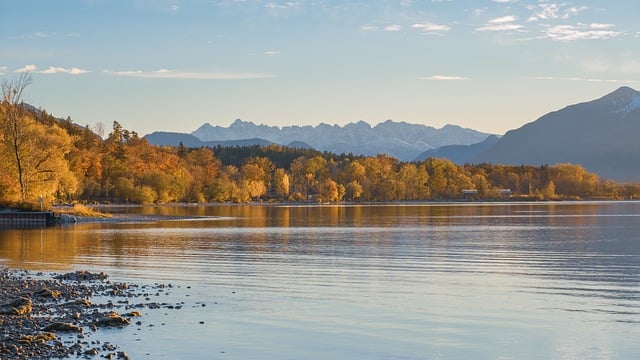When Mother Nature unleashes her extremes, are you prepared to face the scorching heat, bone-chilling cold, or relentless downpours? Surviving extreme weather conditions is not just a matter of chance; it’s about being equipped with the right knowledge and gear. In this guide, we’ll delve into strategies to conquer the challenges posed by hot, cold, and wet environments, ensuring you’re ready for whatever nature throws your way.
Hot Environments
Hydration Is Your Shield
In the blistering heat, dehydration becomes a formidable adversary. To combat this, stay hydrated by drinking water regularly. Don’t wait until you feel thirsty; sip water throughout the day. Consider carrying a reusable water bottle as your trusty sidekick in the battle against the sun.
1. Sip, Don’t Slurp
In the battle against the scorching sun, think of water as your trusty shield. Instead of gulping down large amounts infrequently, adopt the habit of sipping water throughout the day. This steady intake helps maintain optimal hydration levels, keeping you resilient in the heat.
2. The Rule of Eight Glasses
The age-old advice of drinking eight glasses of water a day still holds weight, especially in hot environments. This guideline ensures you’re meeting your body’s basic hydration needs. So, keep a count and make those eight glasses your hydration benchmark.
3. Electrolytes
In extreme heat, sweating becomes inevitable. Along with water, consider replenishing your body’s electrolytes. Sports drinks or coconut water can be valuable allies, preventing dehydration and helping you power through the heat without feeling drained.
4. Timing Matters
Timing your water intake strategically can enhance its effectiveness. During scorching hours, aim to drink a bit more before stepping into the heat, ensuring your body is prepped to face the rising temperatures. Don’t forget to continue hydrating afterward to replenish lost fluids.
5. Befriend Your Reusable Water Bottle
In the quest for optimal hydration, your reusable water bottle becomes an indispensable companion. Keep it by your side, refilling it regularly. This not only helps you track your water intake but also reduces single-use plastic waste, contributing to both your health and the environment.
6. Mind Your Pee!
Your urine color is a reliable indicator of hydration levels. Aim for a light, pale yellow color, signaling that you’re adequately hydrated. Darker urine may indicate dehydration, urging you to up your water intake promptly.
7. Beat the Thirsty Urges
In hot environments, by the time you feel thirsty, your body might already be in the early stages of dehydration. Don’t wait for the thirst signal; instead, make sipping water a constant habit. This proactive approach ensures you stay ahead of the hydration curve.
8. Water-Rich Foods Are Allies
Hydration isn’t solely about what you drink; it’s also about what you eat. Include water-rich foods in your diet, such as watermelon, cucumbers, and oranges. These not only contribute to your overall fluid intake but also provide essential vitamins and minerals.
9. Balance Water with Heat-Reducing Strategies
While water is your primary shield, combining it with heat-reducing strategies enhances your defense. Seek shade, use cooling towels, and wear light-colored, breathable clothing to complement your hydration efforts in the battle against the relentless sun.
10. Listen to Your Body’s Signals
Every individual’s hydration needs differ. Listen to your body’s signals, and if you find yourself feeling fatigued, dizzy, or experiencing headaches, it could be a sign of dehydration. Take immediate action, find shade, and hydrate to ensure your body remains your shield against the blazing heat.
Sun Protection Essentials
Shielding yourself from the sun’s intense rays is crucial. Sunscreen, sunglasses, and a wide-brimmed hat can be your armor. Apply sunscreen generously, focusing on exposed areas, and don’t forget to reapply to maintain your defense.
Dress Smartly
Choosing the right attire is a tactical move. Opt for light-colored, loose-fitting clothes to reflect sunlight and allow your body to breathe. Moisture-wicking fabrics can keep you cool by drawing sweat away from your body.
Cold Environments
Layering Up for Warmth
When the temperature drops, layering becomes your best ally. Start with a moisture-wicking base layer to keep sweat away, add an insulating layer for warmth, and finish with a waterproof outer layer to fend off snow or rain.
The Importance of Insulation
Insulation is your secret weapon against the cold. Thermal socks, gloves, and a hat can prevent heat loss from extremities. Insulated jackets and pants are also must-haves for staying toasty in freezing conditions.
Footwear Matters
Choosing the right footwear is paramount in icy terrains. Insulated, waterproof boots with good traction can prevent slips and keep your feet warm and dry. Don’t forget to layer up with moisture-wicking socks for added comfort.
Wet Environments
Embrace Waterproof Gear
When the heavens open up, having waterproof gear is your shield. Invest in a quality waterproof jacket, pants, and footwear to stay dry. Remember, staying dry is not just about comfort; it’s about preventing hypothermia in cold, wet conditions.
The Power of Quick-Drying Materials
Opt for clothing made from quick-drying materials to avoid the discomfort of soggy clothes. These materials wick moisture away from your body, ensuring you stay comfortable even in a downpour.
Master the Art of Shelter
When the rain comes down relentlessly, having a portable shelter can be a game-changer. A sturdy rain poncho or a compact umbrella can provide temporary relief and keep you dry while on the move.
Conclusion
Surviving extreme weather conditions requires a strategic approach. By understanding the nuances of hot, cold, and wet environments, you can prepare yourself for the unexpected. Remember, it’s not just about enduring nature’s challenges but thriving in the face of adversity. Equip yourself with the right knowledge, gear, and mindset, and you’ll emerge victorious against the most extreme elements. So, whether it’s the scorching heat, bone-chilling cold, or relentless rain, go out there and conquer the elements like a seasoned adventurer.







